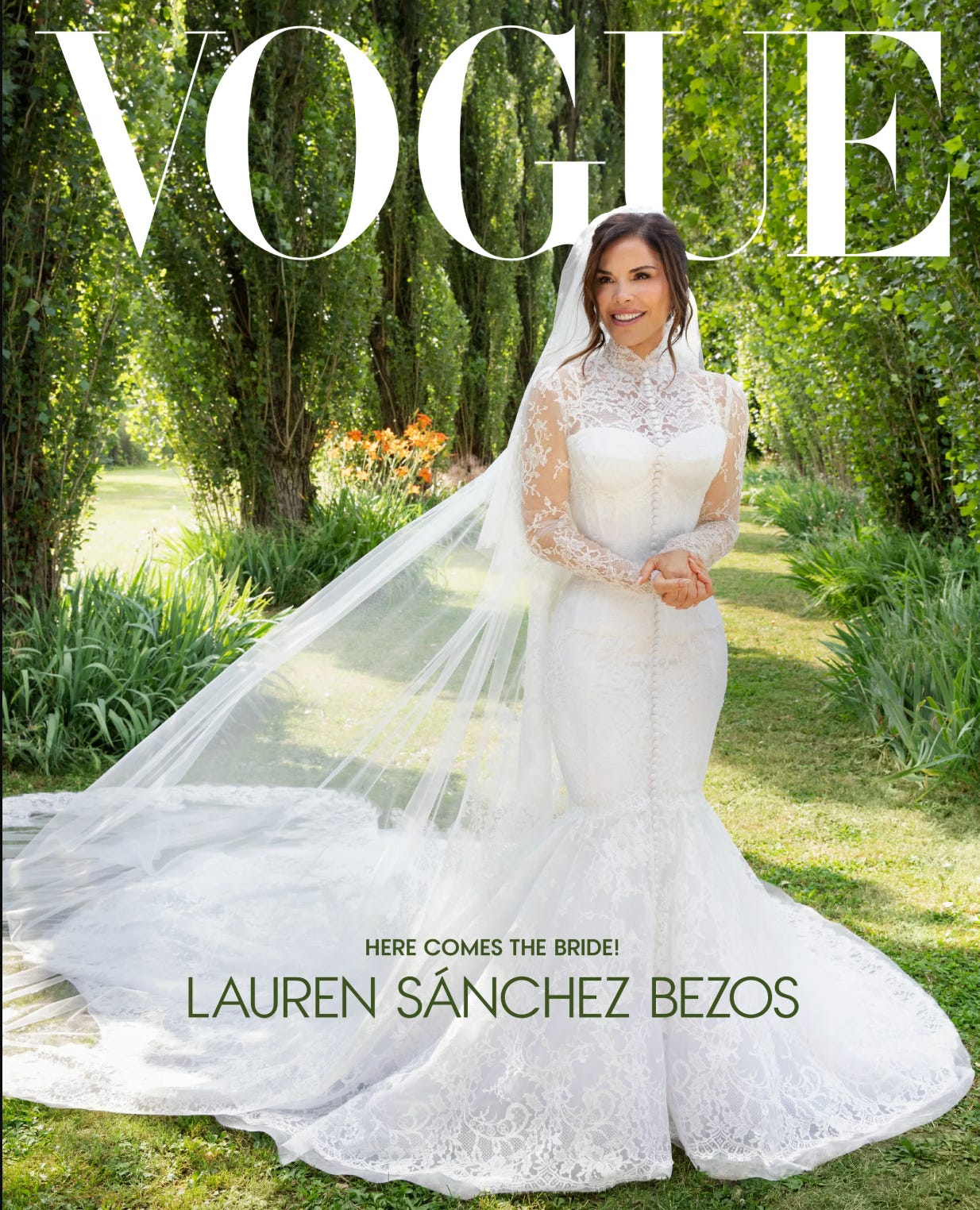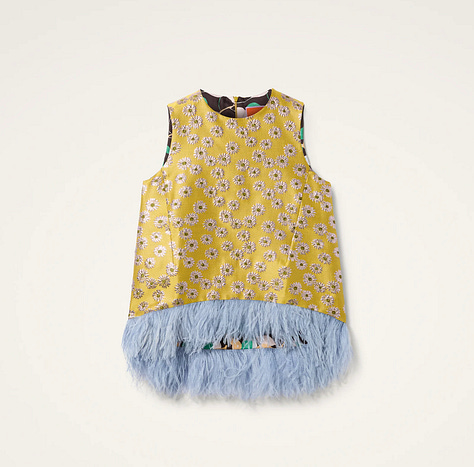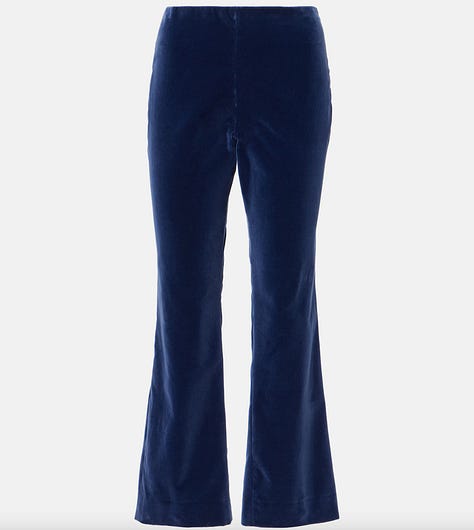Trash is back!
The style of the super-rich is no longer dictated by Anna Wintour - but by Lauren Sanchez.
Anna Wintour has stepped down from Vogue, Lauren Sanchez and Jeff Bezos’ Venetian wedding was the biggest event of the year - it’s apparent therefore that trash is, officially, back.

The quiet luxury era of minimalist tailoring and tonal cashmere has lost its muted magic; and what was once considered aspirational is starting to look anaemic.
The return of what many are calling “trash” - knowingly over-the-top, maximalist glamour - is less a coincidence than a cultural correction.
To understand the return of “trash,” we need to understand trash culture itself.
A term often used to describe popular, lowbrow or mass-market aesthetics; trash culture historically refers to cultural products deemed kitsch, sensationalist or lacking in “refinement.”
It has been satirised by artists like Andy Worhol and Richard Hamilton, but trash culture became more prevalent in British culture in the 2000s, when reality TV, tabloid gossip and fast fashion boomed in popularity.

Trash culture is also, of course, deeply political. It often speaks to working-class identity, anti-elitism and a refusal to apologise for pleasure, artifice or accessibility.
In reclaiming “trash,” marginalised groups have long made space for their own forms of expression. What was once considered embarrassing - too loud, too plastic, too sexual, too much - becomes, in its reclamation, powerful.
When these aesthetics are reclaimed, they soon become mainstream, such as the rise in enthusiasm for Drag culture thanks to Ru Paul’s drag race.

This can happen to all minorities. For instance, take the ‘WAG’ and ‘mob wife’ aesthetics that were revived by the middle classes on TikTok.
When it comes to shifting the aesthetic hierarchy, the Sanchez-Bezos wedding offered a glimpse of what’s to come.
A ceremony that looked less like a wedding and more like the Met Gala at sea, it marked a shift in the visual language of wealth.
The aesthetics were unapologetically theatrical - private jets, body-con backless gowns, aerial drone footage - a fantastic Capitalist caricature and completely out of sync with the discreet luxury that has dominated much of the past decade.

Meanwhile, Anna Wintour’s departure from Vogue is more than just an internal reshuffle.
For over three decades, Wintour helped shape a global idea of taste. Her preference for prestige and timelessness defined fashion’s aspirational hierarchy - all exemplified by her slick bob and dark glasses, which she has worn for over 60 years.

Eventually, however, in the mid 2010s Wintour had to succumb to welcoming Kim Kardashian to the Met Gala. I had the pleasure of once interviewing Wintour, and what was apparent (whether she likes it or not) is that she has a lot in common with the Kardashians.

Welcoming Kim onto the Met Gala carpet was a tacit acknowledgement of Wintour’s then-unmatched ability to generate cultural currency online - something the Kardashians were famed for - at a time when the internet had long since overtaken print as the primary medium of influence.
Likewise, Lauren Sanchez was reportedly “assisted” by Wintour in choosing her outfit for her Met Gala debut, and even received a dedicated Vogue photoshoot.

Taken together, these gestures seemed less like enthusiastic endorsements and more like strategic concessions. They marked a shift in the kinds of women and aesthetics that Wintour had spent decades meticulously excluding.
But Kardashian and Sánchez aren’t anomalies - they’re bellwethers.
Wintour, ever the strategist, appeared to understand that aligning herself with the changing winds was preferable to being left behind by them. But that, in itself, signalled a loss of cultural authorship: Wintour was no longer setting the tone; she was adapting to it.
Reports that she offered some degree of sartorial guidance to Sanchez for her recent wedding festivities feel similarly ambiguous. Perhaps the only thing more uncomfortable than assisting Sanchez with her outfits is not being asked to assist at all.

This shift (whether willingly or not) to maximalism is particularly resonant in Britain, where the class system has long defined aesthetic judgment.
“Trashy” women - often defined as being working-class, from the North or Essex - have historically borne the brunt of style-based moral panic.
From tabloid takedowns to Love Island sneers, a fake tan and a French manicure could invite a pile-on in ways an old, disgraced Etonian could never.

What we’re seeing now isn’t just a return to maximalism, it’s a revaluation and perhaps democratisation of who gets to define taste, and why.
High fashion brands are pivoting accordingly: Balenciaga, once at the forefront of irony-laden quietism, is back to logos and volume. Designers like Diesel and Blumarine are finding success by leaning into early-2000s excess. Even heritage houses like Saint Laurent are shifting away from minimalism, sensing the moment.


Of course, it’s worth noting that this new era of maximalist “trash chic” isn’t free from its own codes and contradictions.
Many of the people embracing it - whether online or in fashion campaigns - still occupy positions of influence and privilege. Loud luxury may look more democratic by championing inclusive aesthetics but it’s still about performance and access. And it’s still deeply tied to consumption.
But it does represent a mood shift.
After years of post-pandemic introspection and economic uncertainty, people seem less interested in pretending that their wealth - or aspirations toward it - should be hidden. If the previous aesthetic era was defined by restraint and subtlety, the new one is about visibility and self-invention.
In that sense, the return of trash isn’t really about trash at all. It’s about who gets to be seen, and how. And in a world where taste is increasingly shaped from the bottom up - via TikTok, resale culture and celebrity spectacle - that fantasy is no longer beige.
Get the maximalist look, here:









